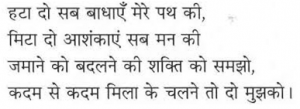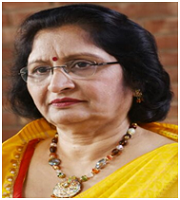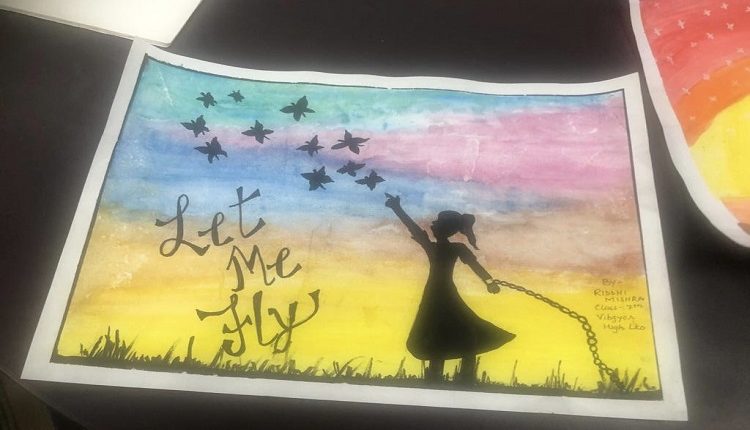An Honest Introspection
Anju Gupta, headmistress, Ahlcon International School, Mayur Vihar, Delhi, tells us how the National Girl Child Day, celebrated in the country on 24 January, got her thinking about the existence of hidden curriculum in our society
As we celebrated National Girl Child Day in India on 24 January, idea of gender equality loomed large in my mind – As educationists, are we doing justice to this topic or are we faltering somewhere? Questions like these troubled me.
The education system around the world is witnessing a significant change due to impact of ongoing pandemic, more so in India as it is marked with stark gender inequalities and digital divide.
Thinking about curriculum, well, generally speaking, curriculum refers to the outline of concepts to be taught to students to help them meet the content standards. However, the transmission of content in the classroom is highly contextual, full of indirect and often unintentional messages and cues which is referred to as ‘Hidden Curriculum.’ Although this hidden curriculum remains unacknowledged in India, it creates a powerful context of learning, shaping students’ self perceptions and others’ views. A few prevalent examples being –
- A teacher discussing about teamwork lists hero, heroine and item-girls as a member of film making crew. Examples of pilots, defence officers, fire-fighters, mechanical engineers are given for male professions and that of air hostesses, teachers, dieticians and childcare workers for female professions.
- Some teachers initiate twice the number of interactions with boys which include verbal interactions like encouragement and discussion of high order questions. This also includes non-verbal interactions like giving more time to boys to answer their questions, nodding towards them, looking towards their side while teaching and walking more between the boys’ rows. Only high performing girls are found to interact with such teachers.
New curriculum framework should examine the cultural, ideological and political effects of this hidden curriculum and its impact on schools, organisations, unwritten norms and classroom practices
- Teachers (not all though) tend to make conduct related interactions more with girls even when boys disrupt the class more often.
- Verbally, many teachers discourage girls by making frequent references to girls about marriage, household work and child bearing.
- Teachers tend to give more responsibilities to boys as compared to girls and most of the times, boys are made the class-monitors.
- Boys are given preference in sports and games. Activities like cricket, swimming, skating, horse-riding are offered to boys while girls are enrolled in home science, art, song and dance related subjects. In villages, traditional games like spinning top (lattu), gillidanda, bow-arrow are allotted to boys.
- Also, in a few schools, there are separate queues for boys and girls for mid-day meal distribution and boys are served first.
- For loud reading, boys are preferred than girls. However boys are not accepted crying for any reason.
In nutshell, there are numerous instances of intentional/ unintentional prejudiced attitude in many Indian households and educational institutions, especially in rural areas or semi-urban areas. Not that all teachers or schools experience this predicament, but its prevalence in any ratio is a matter of concern. We have begun to raise our daughters like sons but a few of us have courage to raise our sons like our daughters. Once we do this, there can be a visible impact seen in our gender-biased society.
There are numerous instances of intentional/ unintentional prejudiced attitude in many Indian households and educational institutions. Not that all teachers or schools experience this predicament, but its prevalence in any ratio is a matter of concern
In education sector, through this hidden curriculum, teachers are unknowingly and unintentionally going against United Nation’s SDG 5 – Gender-Equality, which is detrimental to main objectives of SDG 4 – Quality Education and New Education Policy (NEP) 2020 as envisaged by our Prime Minister Narendra Modi and other educational leaders. It is crucial that hidden curriculum is acknowledged as a vital area of curriculum design and educational assessment impacting both academic outcomes and socio-emotional competencies. New curriculum framework should examine the cultural, ideological and political effects of this hidden curriculum and its impact on schools, organisations, unwritten norms and classroom practices.
We have to support the progressive educational goals through continuous teacher training and school monitoring programmes. Educational policies must articulate and take note of this hidden curriculum particularly with reference to marginalised social groups in diverse educational settings and teaching areas. The girls solicit the support of society for a Gender-Neutral India –

Let’s all help girls to find out their true identity, their true self and let them live their vision and mission.

Written by:
ANJU GUPTA
(A conscious teacher)
Want to read more such though-provoking stories by our educationists? Click here
DISCLAIMER: Views expressed above are that of the author and do not reflect the views of the website. The Peeper Times does not assume any responsibility or liability for the same.
Do you feel strongly about something? Have a story to share? Write to us at info@thepeepertimes.com or connect with us on Facebook or Twitter




Comments are closed, but trackbacks and pingbacks are open.